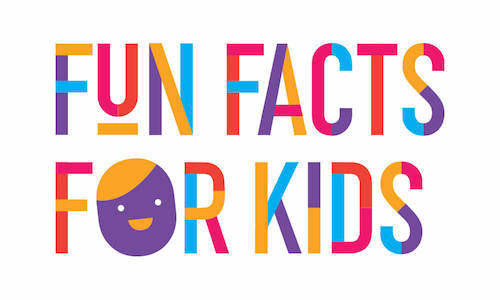Bees are fascinating creatures, and essential for life on Earth. If you are doing a school project about bees, these fun bee facts for kids will come in handy!
AMAZING BEE FACTS FOR KIDS
Did you know…
Bees have 6 legs, 4 wings, and FIVE eyes!
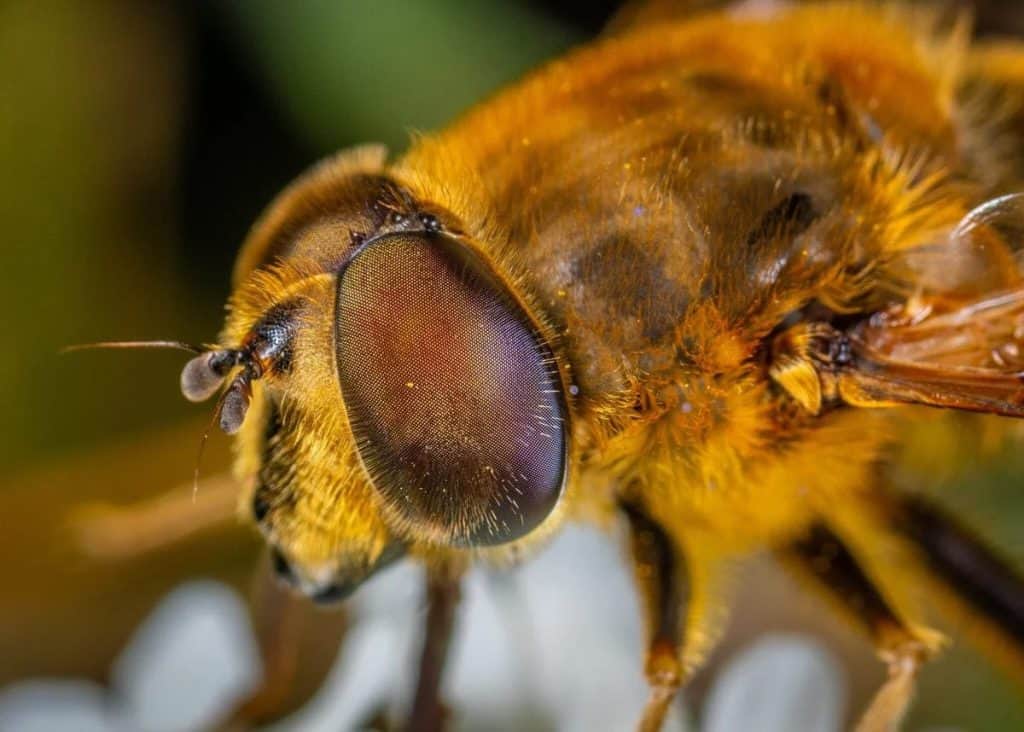
As well as two large eyes either side of its head, a bee has three tiny ‘simple’ eyes on the top of its head. These little extra eyes can only detect light, not shapes, and they’re there to help a bee sense if it is being approached by a predator from above.
Think that’s the strangest thing about bee eyes? Their two main eyes are hairy! Scientists think the tiny hairs help the bee figure out wind direction so that they can stay safe in flight.
Bees flap their wings up to 250 times per second
The buzz you hear as a bee bumbles past is caused by its wings vibrating. Bees have two pairs of wings. When they fly, they hook their back wings to their front wings for added flight power. Their wings flap between 180 and 250 times per second – that’s up to FIFTEEN THOUSAND flaps per minute! This incredible speed creates tiny hurricanes, which help lift the bee’s heavy body. You can see a slow motion video of a bee in flight here.
Honey bees facts for kids – bees communicate by dancing
When a bee discovers a particularly good source of nectar and pollen, they want to tell everyone else all about it. They do this by performing a special dance called a waggle dance. By turning in circles and waggling their bottoms, they can let other bees know exactly how far and in what direction to fly to find the same flowers. There’s an amazing video of a bee’s waggle dance here.
There are 20,000 different species of bee in the world
…and around 2000 of those species are native to Australia. Of Australia’s 2000 native bee species, the largest is the carpenter bee at 24mm long, and the smallest is the Quasihesma bee at only 2mm long.
The bees we get most of our honey from are not native to Australia. The European honey bee was introduced in 1822.
If you would like some bee stickers to embellish your facts about bees school project, click here.
Bees can be many colours
We always think of bees as being black and yellow, but they really come in many colours. In Australia we have bees that are blue and black striped, blue with black dots, green, brown, and even a shimmering rainbow colour!
Not all bees live in hives
It’s a popular misconception that all bees live in beehives, but there are lots of species of solitary bee. Apiarists – that’s the fancy name for beekeepers – build hives for their honeybees so that it is easier to gather the honey, comb, and wax. In the wild, social bees will build nests in hollow logs or hanging from branches, and solitary bees will burrow underground or sleep inside plants.
LIFE INSIDE A BEEHIVE
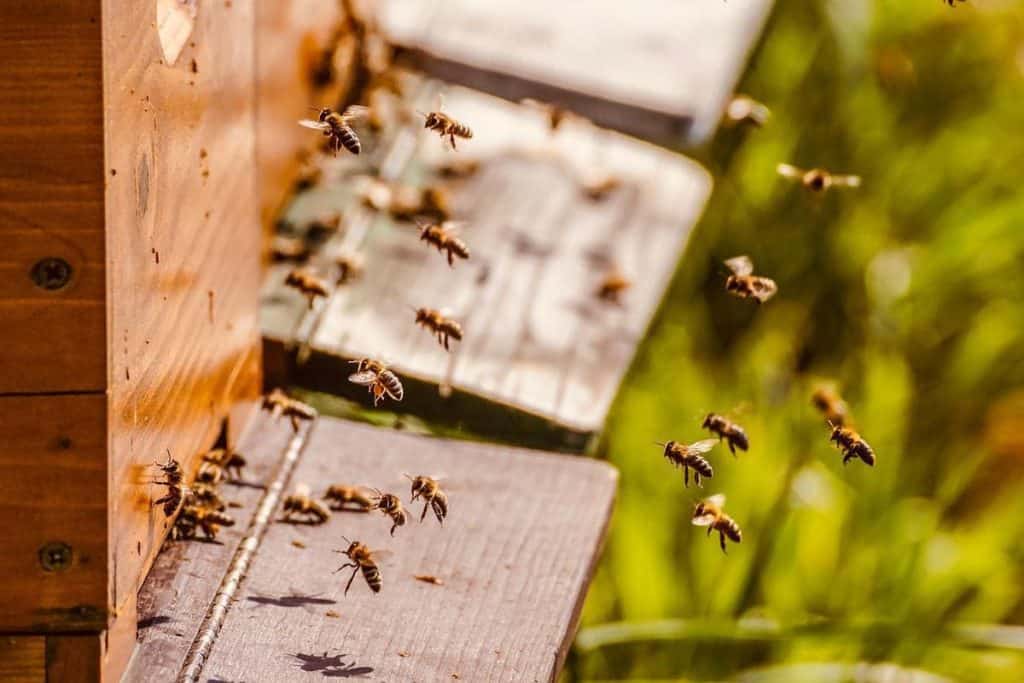
Social bees that live in hives have a very well organised home. Everyone has a job to do. This is who lives in a honey bee colony.
The queen bee
The queen bee is the most important bee in the hive. Her job is to lay eggs and make sure everyone in the hive is happy. Here are some quick queen bee facts:
- There is only one queen in the colony
- The queen bee lives around 1-2 years, although one queen bee was known to live almost 8 years
- The queen bee lays around 1000 eggs per day, and up to 1.5 MILLION in her lifetime!
- All the bees in the hive are the queen’s children
Worker bees
All the bees that live in the hive are female. They do ALL the work and their jobs change as they get older. There can be around 40,000 to 50,000 worker bees living in one hive. The female worker bees…
- clean and maintain the hive
- feed the larvae, drones (males) and queen
- forage for pollen, nectar and water
- make wax and build the honeycomb
- make all the honey
- guard the hive from predators
- live up to 38 days in summer, when there is so much work to be done
- live up to 6 months over winter while they wait for the new spring flowers
Drones
Drones are male bees. There can be a few hundred drones that belong to a colony, but they don’t live in the hive. Instead, they live up to 5km away in “drone zones”, 3-10 metres above the ground. Their only job is to mate with the queen, after which they die.
WHAT HAPPENS INSIDE A BEEHIVE
The worker bees have different jobs according to their age. The youngest worker bees, up to around 15 days old, build honeycomb and look after the larvae. The queen lays up to 1000 eggs per day, so there are a lot of eggs and larvae to look after.
Honeycomb is made up of hexagonal cells built from wax. Worker bees make the wax themselves in glands in their abdomens. Some of the honeycomb is used as “brood comb”. This is where the queen lays her eggs. The rest of the honeycomb is used to store food like honey and pollen.
From around 15 days old the worker bees are old enough for ‘field duties’ – collecting nectar, pollen, and water to feed all the other bees. They will work all day, every day.
Bees are natural scientists and engineers
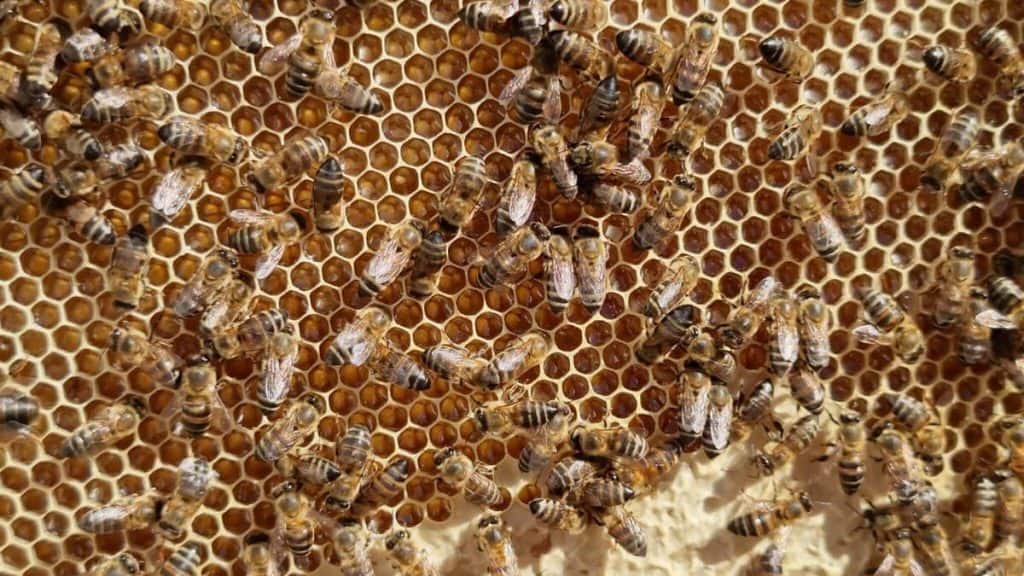
The hexagonal shape of the cells makes the honeycomb very strong. Engineers have learned from bees and use the honeycomb shape in many projects where a strong structure is required.
Bees also know how to convert nectar to honey. When bees forage, they suck up nectar from flowers and store it in their honey stomachs. When they get back to the hive, they use their long tongue to transfer this nectar to other bees, who store it in the honeycomb. Bees add enzymes to the nectar to make it change into honey, and flap their wings to evaporate the excess moisture. When the comb is full of good honey, they seal it with a wax cap until it’s needed.
MORE FUN BEE FACTS
- Bees have been around for almost 30 million years
- Bees will forage up to 5 km from their colony to collect food
- They collect pollen in little sacs on their back legs, and suck nectar through their straw-like tongues to carry in their honey stomach
- A hive needs around 125 kg of honey and 32 kg of pollen to feed its colony for one year
- To make one kilogram of honey, bees need to make approximately 150,000 flights, covering between 150,000 and 450,000 kilometres, and visit more than one million flowers
- One worker bee will make less than 1/2 a teaspoon of honey in its lifetime
- Bees navigate using the sun
- Some Australian bees have developed night vision so they can forage when fewer predators are around
- Bees can fly at speeds up to 30 km per hour
- Bees know when it’s going to rain. They work extra hard the day before, and seal the hive entrance with wax to keep the rain out
- Bees can see ultraviolet light, so colours look different to bees. Maybe this is why purple flowers are their favourite!
- Bees can’t see the colour red
- Bees regulate the temperature of their hives by vibrating their bodies to warm it up, or flapping their wings to cool it down
- Male bees can’t sting
- Female bees will only sting if they sense danger. A bee can only sting once, and then it dies. If you are stung, scrape the sting out of your skin and apply a little honey or pure aloe vera gel to ease the pain. Some people can be allergic to bee stings, so monitor for signs of anaphylaxis
- Honey never goes off. You can safely eat honey that is hundreds of years old
- Raw honey that hasn’t been processed or pasteurised will naturally crystallise. Crystallised honey is still good to eat, and can be made liquid again by gently warming it
- World Bee Day is celebrated every year on May 20, in honour of how important the little bee is
BEES ARE ESSENTIAL TO LIFE
Many of the items we grow for food, including fruits, vegetables, nuts, and some cereal grains require pollination.
As bees fly from flower to flower, pollen gets stuck to the tiny hairs on their bodies and deposited on other flowers nearby. This enables the flowers to develop into the foods we – and other animals – need to survive.
Bees are so important to this process that beekeepers take their hives across Australia to pollinate farmers’ fields and orchards so that we have plenty of fresh produce in our supermarkets.
Did you know…
The largest annual migration of livestock in Australia happens every August when BILLIONS of bees are moved to Victoria’s almond orchards to pollinate the almond trees. On their way back to their homes, beekeepers will stop off at Canola fields and other agricultural areas so that the bees can pollinate even more essential crops for farmers.
Without bees, many of the fresh fruits and vegetables that we love could become extinct. You can make sure Australia always has lots of bees for agriculture by buying Australian honey
HOW TO BE BEE FRIENDLY
Bees are such good friends to people, so we should be good to them too!
Plant a bee-friendly garden
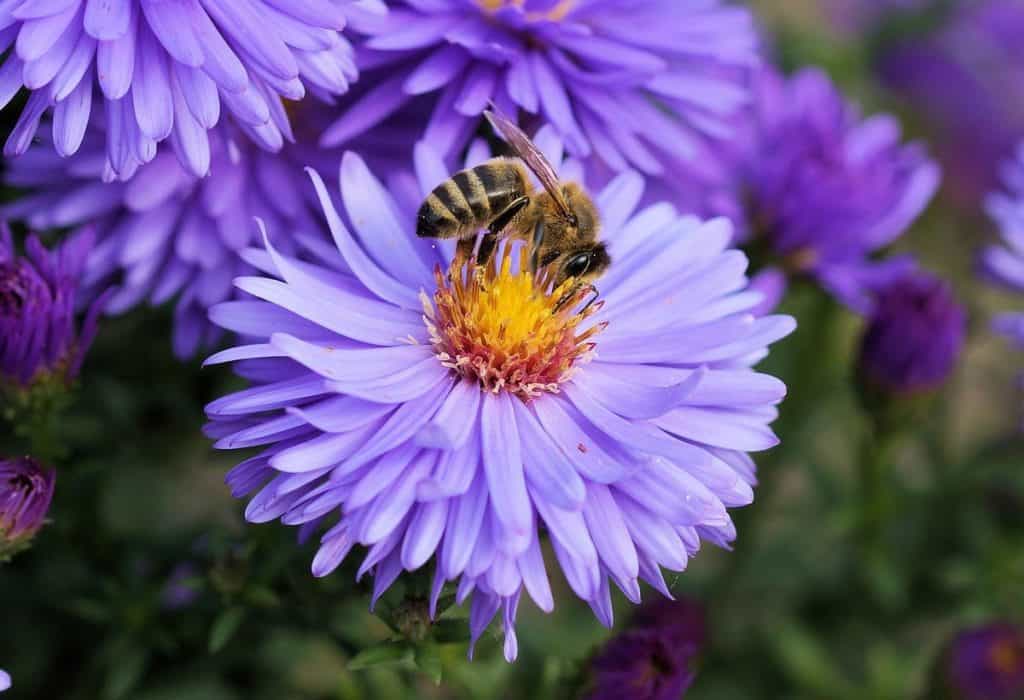
Bees love purple flowers like lavender, and flowers that have big open faces like daisies that are easy to land on. Bees will need to forage for food all year round, so be sure to plant some flowers that flower in winter too.
Provide resting places in the shade by making a bee hotel. A bee hotel can be made by filling a terracotta plant pot with bamboo canes and laying it on its side facing the sun.
The bees would also appreciate a bee-bath for a safe place to land for a drink of fresh water. You can make a bee-bath by filling a shallow dish with water and placing lots of flat pebbles in it for the bees to land on.
If you would like to read more about bees, check out these great bee books for kids.
MORE FACTS FOR KIDS
If you are looking for more great facts for kids to help with projects, check out our articles:
Animal facts for kids
- Quokka Facts for Kids
- Ant Facts for Kids
- Crocodile Facts for Kids
- Dolphin Facts for Kids
- Echidna Facts for Kids
- Australia’s Deadliest Animals Facts for Kids
- Cheetah Facts for Kids
- Endangered Animals Facts for Kids
- Kangaroo Facts for Kids
- Possum Facts for Kids
- Koala Facts for Kids
- Dog Facts for Kids
- Cat Facts for Kids
- Butterflies Facts for Kids
- Dingo Facts for Kids
- Turtle Facts for Kids
- Penguin Facts for Kids
- Whale Facts for Kids
- Wolf Facts for Kids
- Sustainability Facts for Kids
- Recycling Facts for Kids
